
Oh, Snap! Contest Targets Camera-Trapped Wildlife (Gallery)
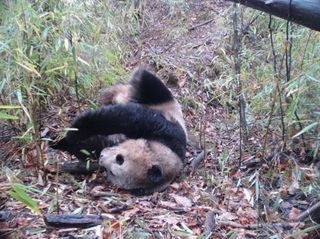
Live Science staff compiled this gallery, with information provided by the Wildlife Conservation Society (WCS), for Live Science's Expert Voices: Op-Ed & Insights.
Camera-traps have revolutionized the search for the world's rarest species, helping secure their protection. The technology has also become a favorite of hobbyists, allowing anyone to capture the unexpected wildlife in their backyards, and around the globe.
To find the best of those amateur images, the WCS, in partnership with St. Lawrence University's Nature Up North project, have created the "When Animals Snap" competition — and only three days remain to enter images before the contest ends March 23rd.
To submit an image, visit the competition page on the WCS Wild View photo blog, and to view more captivating camera trap images, see the gallery below.
For the birds
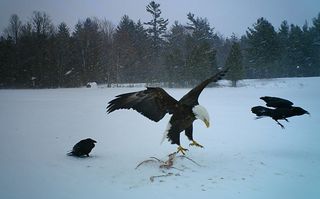
A bald eagle and ravens captured on a camera trap in Potsdam, New York. (Credit: ©John Bates.)
Not so laid back
Sign up for the Live Science daily newsletter now
Get the world’s most fascinating discoveries delivered straight to your inbox.
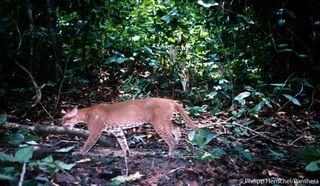
Almost never seen in the wild, African golden cats are occasionally captured in camera-trap cameos — though even then, they're usually caught in the act of doing little more than grooming themselves. But recently, in a bit of astonishing luck, scientists captured a golden cat attacking red colobus monkeys in Uganda. See the footage in African Golden Cat Attacks Monkeys in Rare Camera Trap Footage, an article by Live Science editor Megan Gannon. (Credit: Courtesy of Panthera.)
Rolling in the leaves

A giant panda, Ailuropoda melanoleuca, is one of several camera-trapped critters featured on Smithsonian Wild and highlighted in the Live Science gallery Camera Trapped: Wonderful and Weird Wildlife Around the World by Andrea Mustain. (Credit: Smithsonian Conservation Biology Institute.)
Surprise!
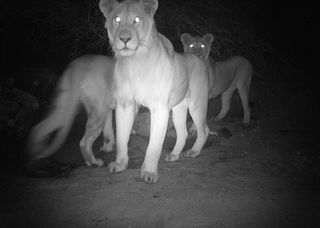
African lions, caught in the act, in Mpala research center, Kenya. (Credit: ©Michael Butler Brown.)
Mealtime
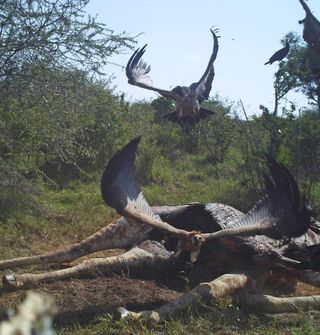
Vultures swarm a giraffe carcass near a camera trap in Mpala research center, Kenya. (Credit: ©Michael Butler Brown.)
Sneaking a peak
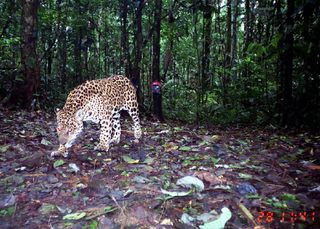
A camera-trapped jaguar in the Amazon region of Ecuador. (Credit: ©Santiago Espinosa.)
Getting what he wants
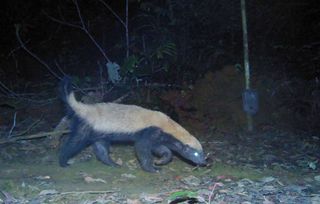
A honey badger captured by a camera trap in Gabon, part of a study of 12 small predators. Read about the study in Honey Badger Don't Care About Camera Traps, a gallery by Live Science's Megan Gannon. (Credit: Laila Bahaa-el-din/Panthera.)
Follow all of the Expert Voices issues and debates — and become part of the discussion — on Facebook, Twitter and Google+. The views expressed are those of the author and do not necessarily reflect the views of the publisher. This version of the article was originally published on Live Science.
